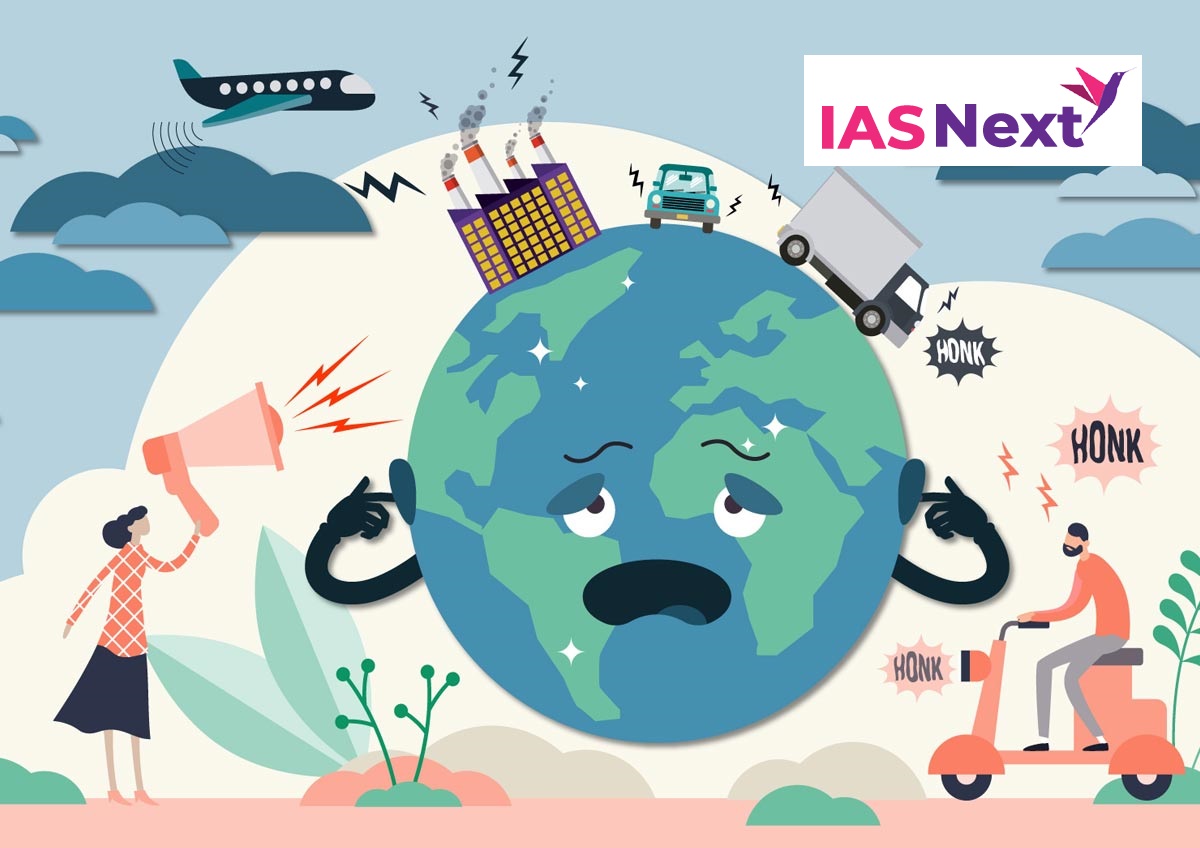CURRENT AFFAIRS
Get the most updated and recent current affair content on Padhaikaro.com
Noise Pollution
- IAS NEXT, Lucknow
- 22, Apr 2022

Reference News:-
A new set of controversies has emerged in Maharashtra after Maharashtra Navnirman Sena (MNS) chief Raj Thackeray raised the issue of loudspeakers in mosques and warned that if they are not removed by May 3, his party would play Hanuman Chalisa out loud.
- The Maharashtra government might bank on the provisions of The Noise Pollution (Regulation and Control) Rules, 2000, to go about the controversy.
What is Noise pollution according to Indian laws?
Noise is anything that is an unwanted sound, according to the Central Pollution Control Board. Any unwanted sound that causes annoyance, irritation and pain to the human ear is termed ‘noise’.
What is the acceptable level of noise?
- Rules have defined the acceptable levels of noise across areas during daytime and nighttime. Daytime comprises 6 am to 10 pm, and night is 10 pm to 6 am.
- In commercial areas, noise limitation has been fixed at 65 dB and 55 dB during daytime and nighttime respectively. In residential areas, they are 55 dB and 45 dB during daytime and night respectively.
- In industrial areas, the ceiling is fixed at 75dB and 70dB during daytime and nighttime, whereas in silence zones, the same is at 50dB and 40dB.
The Noise Pollution (Regulation and Control) Rules, 2000:
Section 2 (a) of the Air (Prevention and Control of Pollution) Act, 1981 considers noise as ‘air pollutant’. According to reports, “air pollutant” is any solid, liquid, or gaseous substance, including noise, present in the atmosphere in such concentrations as to be or tend to be harmful to humans, other living creatures, plants, property, or the environment.
- Noise pollution and its sources are regulated under The Noise Pollution (Regulation and Control) Rules, 2000 under The Environment (Protection) Act, 1986.
- Under the Act, there is a defined ambient acceptable noise levels, restrictions on the use of loudspeakers, sound-emitting construction equipment, horns, bursting of crackers and so on.
What are the laws around loudspeakers?
Central Pollution Control Board has listed fines for the violation of noise pollution norms, including the use of loudspeakers or public addresses that can result in a fine of Rs 10,000.
- The noise level at the boundary of the public place, where a loudspeaker or public address system or any other noise source is being used, shall not exceed 10 dB (A) above the ambient noise standards for the area or 75 dB (A), whichever is lower.
- The rules also state that a loudspeaker or a public address system shall not be used except after obtaining written permission from the designated authority.
- Exemption: The state government can provide exemption during any cultural or religious festive occasion of a limited duration not exceeding 15 days in all during a calendar year.
How can noise pollution impact health?
While noise pollution does not receive as much attention as air and water pollution, it is known to impact the health of people.
- According to the World Health Organisation (WHO), about 1.1 billion young people (aged between 12–35 years) are at the risk of hearing loss due to noise exposure.
- The WHO has stated that there is sufficient evidence that noise exposure at night causes self-reported sleep disturbance and noise-induced sleep disturbance is viewed as a health problem.
- WHO also states there is evidence, albeit limited, that disturbed sleep causes fatigue, accidents and reduced performance.
- Various physical disorders due to higher noise include temporary deafness, headache and an increase in blood pressure.